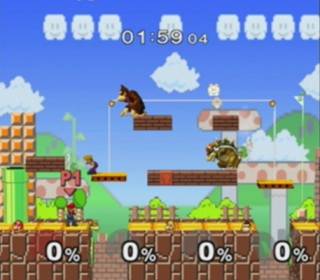Hiding in Plain Sight: Lenticular Design in Games
By thatpinguino 27 Comments

I’m an avid Magic the Gathering player and I’ve been thinking recently about what lessons game designers could take away from the world’s number one TCG. The free-to-play community seems to be earning a doctorate studying MTG's lessons about habit formation, the benefits of random boosters, micro-transactions, and pay to win. However, there are lessons in MTG beyond its financial model. Mark Rosewater, the head designer of MTG, has a design term that I haven’t heard applied to any other context before that is really worth learning: lenticular design. This school of design takes its name from lenticular pictures, which are pictures that look different depending on what angle you look at them from. The crux of this design philosophy is that there are certain layers of strategic and mechanical depth that new players simply do not understand well enough to even detect their presence. As a result, there are types of strategic depth and complexity that you can hide in plain sight without impacting your new player’s perception of difficulty and complexity. Thus, good use of lenticular design results in a game that seems simple to new players and complex to experienced players at the same time.
An example of lenticular design in MTG is the difference between the cards Centaur Courser and Invasive Species. Both of these cards cost the same amount of mana and have the same power and toughness; however, Invasive Species also returns a permanent to your hand when it comes into play. That effect is hugely useful to an experienced player, to the point where an experienced player will almost always return a card that benefits from being replayed. But to a novice that ability just looks like a cost; it is just something that happens when you play Invasive Species. The new player doesn’t think about how invasive Species works in concert with other cards. The new player doesn’t build a deck around Invasive Species returning things to your hand. The new player is just happy to play a 3/3 for 3 mana. To a novice, Invasive Species looks like a slightly worse Centaur Courser. To an experience player the two cards actually look quite different and belong in slightly different decks. In effect, Invasive species looks functionally different to players of different experience levels: like a lenticular picture.
In that MTG example it is pretty easy to see how the designers hid some strategic complexity in plain sight, but the real trick is applying this lesson to video game design. Games that use lenticular design should follow two simple rules. 1. The game that the new player sees should be fun in and of itself. If a new player feels like they are constantly at a disadvantage they won’t have fun and will quit more often than not. New players quitting from frustration is a great way to kill a game long term. 2. The complexity should always be there for the experienced player. Plenty of games ramp up slowly by not making the complex stuff available at all until hours in; that is not lenticular design. The advanced player should be able to take advantage of their experience whenever possible. Now the tough part is balancing rule 1 and rule 2 since the two can often be at odds.

Fighting games make great use of lenticular design in their best cases. Games like Street Fighter and Mortal Kombat do a great job of presenting players with relatively simple punches, kicks, and special moves that feature a ton of hidden depth in their use. In a single player context, most 2D fighting games are great examples of lenticular design since each character has tons of moves to learn and combos to master. But, a 2D fighter can be played without knowing any of that stuff. The biggest problem most fighting games have is that the gap between knowing that higher levels of complexity exist and being able to capitalize on that complexity is a Grand Canyon sized trench. Even executing a dragon punch or fireball as a new player is super difficult, let alone real combos. I haven’t even mentioned knowing when to do those things. The learning problems are exacerbated in competitive play since new players have a 0% chance of beating an experienced player. I can’t tell you how many people I have tried to play Street Fighter with that have never wanted to play me again after like 2 games, and I’m not even good. Playing most 2D fighters against a much better player is just not fun at all and that’s a problem for the growth of fighting games. The complexity issue killed fighting games once and it is liable to do it again if complexity creep continues as it has in more recent fighters.
Honestly, the fighting game series that has best used lenticular design is Super Smash. The moves in Super Smash are easy to pull off since they don’t require complex motions or combinations. The high-end play is there for experienced players, but the elements of sheer randomness and chaos that the game allows in its default setting (items on and 4 players) allow any player to win. There are also a bunch of levels that mitigate the effects of skilled play, like the infamous “PokeFloats.” You need to go out of your way to make Super Smash 100% skill based and (contrary to what people on the internet seem to think) that is actually to the game’s long term benefit. Random elements are hugely useful for allowing unskilled players to win every once and a while, while still being at a huge disadvantage. While an experienced Smash player can dance around the screen with ease performing infinite combos and devastating spikes, all of their efforts can be disrupted by an alliance or unfortunate bomb crate. So the experienced player has a huge advantage in most games, but not a free win. I know plenty of players who love Smash and don’t even know about wave dashing: that is the result of great lenticular design.
Those are a few uses of lenticualr design, but now that I have explained the basics I want to know what ya’ll think. What games have you played that make use of lenticular design? What games are particularly bad at this brand of design?


